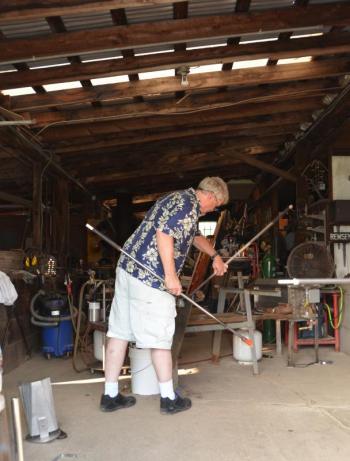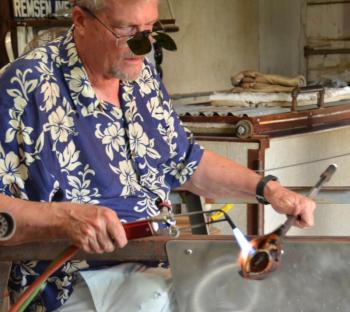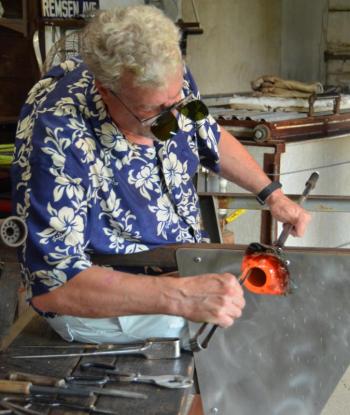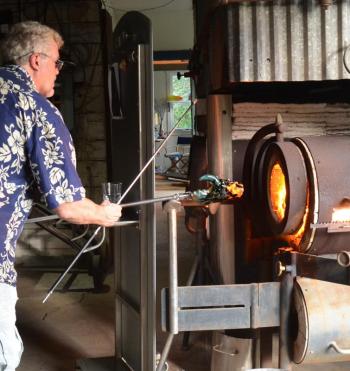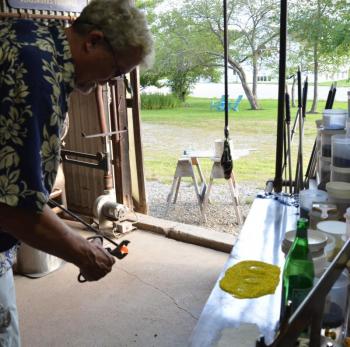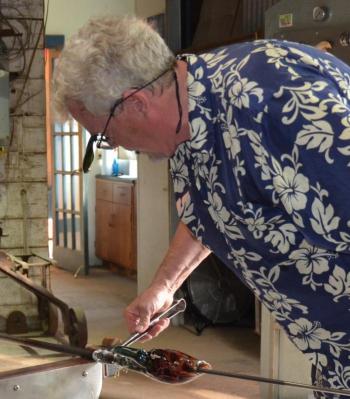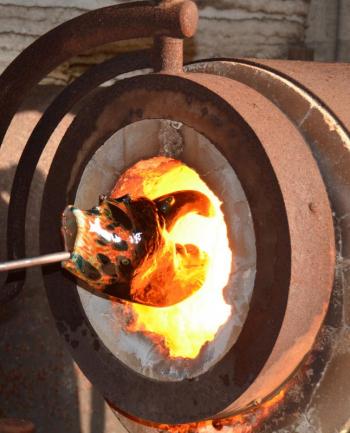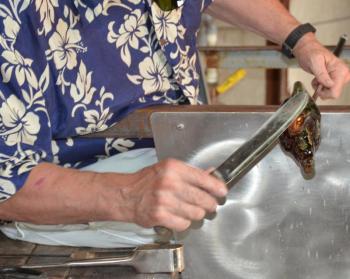ROCKPORT — On a hot August afternoon, artist Richard Remsen is in his element, standing close to the flames firing his 2,100-F oven. Welders glasses are pulled over his regular glasses, and he’s decked in a Hawaiian shirt with a rip down the center, shorts and sneakers. At the end of a long blow pipe stuck in the oven is first a blob of liquid glass; slowly, though, it takes on the form of a lobster claw, as Remsen carefully tools it toward a piece of glass art.
These lobster claws are his latest creative line, in a long history of glass art.
Remsen has produced close to 80 claws of all different colors, blended and fused in the hot fires of his West Rockport Foundry. The lobster claws are part of an Farnsworth Art Gallery installation, and Remsen is on the last legs of getting more pieces ready for the September show.
And before the lobster claws there were fish, and lamp globes and delicate glasses, and all kinds of blown and cast glass. They are on display at the gallery, next to the Park Street Foundry.
Remsen has been practicing the age-old art of glass-making since 1974, when he studied with the masters at Rhode Island School of Design. He opened the Foundry in 1974, in the barn of his West Rockport farm, and has been creating there ever since.
If he is not working with glass, he will be sculpting metal or bronze. When the oven and kiln are hot, they are hot, and Remsen never skips a beat. The music — Roseanne Cash, Men at Work, U2 — keeps him in tempo, as he moves from the oven to the blow torch to a bench where he files or cuts his still hot pieces with a sharp knife.
It’s art underway at the Foundry, and visitors are welcome. Shirley Remsen, Richard’s wife, might stop by to say hello, sometimes with children and grandchildren. The Foundry is an artists’ spot, and it thrives on creative energy.
You won’t be talking with Remsen while he works, but you can sit in a director’s chair, next to the shelves filled with containers of colored glass, and watch the dynamic process, and listen to the hardening glass pop as it settles into a permanent form.
See more at www.glassclaws.com



